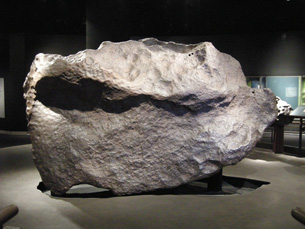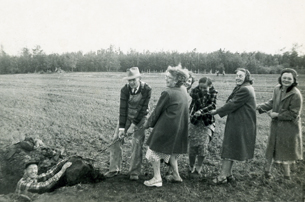Module 3
1. Module 3
1.17. Page 4
Module 3—Electrochemical Reactions
 Read
Read
Some substances are not stable. One way to explain that lack of stability is to describe a reaction in which the same species acts as both the oxidizing and the reducing agent. Read “Disproportionation” on page 577–578 of the textbook.
 Read
Read
In this lesson you have learned how to
- use a redox table to predict the spontenaeity of reactions
- write half-reactions for species not on a redox table
Is it possible to add any oxidation and reduction half-reactions to produce a net ionic equation? Read “Predicting Redox Reactions by Constructing Half-Reactions” on pages 579–581 in the textbook. You will note that the method is very similar to the method you have already learned.
So far in this module, you have learned many skills for writing half-reactions and net ionic chemical equations, and for predicting whether spontaneous chemical change will occur when reactants are combined. You have also learned how to write chemical equations for substances that are not listed on the “Table of Selected Standard Electrode Potentials” in your Chemistry Data Booklet. If you write reactions that do not appear on this table, what aspect of this chemical system are you unable to determine?
 Self-Check
Self-Check
SC 3. Complete “Practice” question 31 on page 581 of the textbook.
 Self-Check Answers
Self-Check Answers
Contact your teacher if your answers vary significantly from the answers provided here.
SC 3.
Practice 31.
a.
4 [Zn(s) → Zn2+(aq) + 2 e-]
NO3-(aq) + 10 H+(aq) + 8 e- → NH4+(aq) + 3 H2O(l)
4 Zn(s) + NO3-(aq) + 10 H+(aq) → 4 Zn2+(aq) + NH4+(aq) + 3 H2O(l)
b.
Cl2(g) + 2 e- → 2 Cl-(aq)
SO2(g) + 2 H2O(l) → SO42-(aq) + 4 H+(aq) + 2 e−
Cl2(g) + SO2(g) + 2 H2O(l) → 2 Cl−(aq) + SO42-(aq) + 4 H+(aq)
 Reflect on the Big Picture
Reflect on the Big Picture

Early European explorers were surprised to find that the Inuit of northwestern Greenland were hunting with iron weapons despite the fact that the Inuit did not appear to have the technology to separate iron from its ore. To add to the puzzle, at the time, Greenland had no known iron ore deposits. Essentially, the Iron Age had begun for the First Nations people of northwestern Greenland. This was interesting because the use of iron was not documented anywhere else in the western hemisphere until contact was made with Europeans.
The mystery of how the Inuit had access to iron was solved when the explorers discovered that the Inuit were harvesting the iron from several huge meteorites. The Ahnighito meteorite pictured is 31 tonnes and is the largest fragment of a 59-tonne mass called the Cape York meteorite, which is believed to be the center of an early planet. The Ahnighito meteorite and some of the other, smaller fragments are on display in the American Museum of Natural History in New York City.
Iron found in ore deposits on Earth exists in an oxidized state, for example, as Fe2O3. Much of the iron found in a meteorite is in the form of the element, Fe. The Inuit were able to make tools using pieces of the Cape York meteorite because the pieces contain over 90% iron. Since meteorites form in space, many meteorites contain unique minerals (iron compounds) not normally found on Earth.
One of the most studied meteorites to strike Canada is the Abee meteorite, which struck Earth in 1952 near Abee, Alberta. The Abee meteorite is only 32% iron. Accounts indicate that the Abee meteorite smells like gunpowder due to the large proportion of sulfur it contains. The unique iron and sulfur minerals in this meteorite, such as djerfisherite (K3CuFe12S14), may suggest that the meteorite was once a piece of the planet Mercury and was formed over 4.5 billion years ago. The meteorite was extracted from a two-meter-deep hole in a wheat field by a farmer, a school teacher, and several other interested townsfolk. The Abee meteorite is currently part of the National Meteorite Collection and remains available for further study.

When Chemistry 30 Learn EveryWare was being developed, a meteorite was observed in the night skies over Alberta. Pieces were found near Lone Rock, Saskatchewan. You might research the composition of this meteorite and the theories about its origin.
RBP 1. Use your knowledge of electrochemistry to explain how it is possible for iron to exist in different forms (both as a pure substance and within compounds) found in Earth and in space as evidenced by the composition of the Cape York and Abee meteorites.
Save a copy of your response in your course folder.
 Module 3: Lesson 3 Assignment
Module 3: Lesson 3 Assignment
Submit your completed Module 3: Lesson 3 Assignment to your teacher.